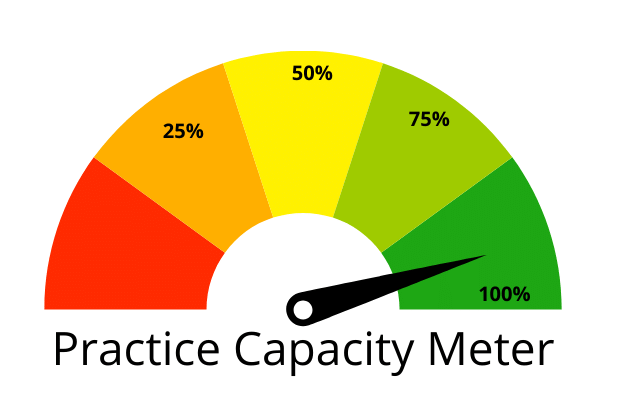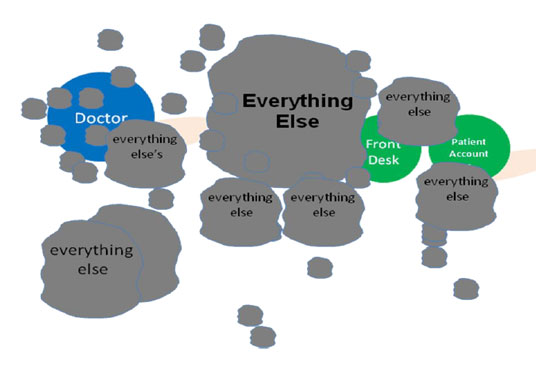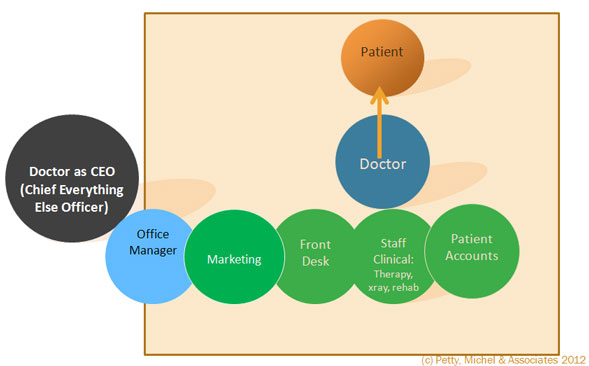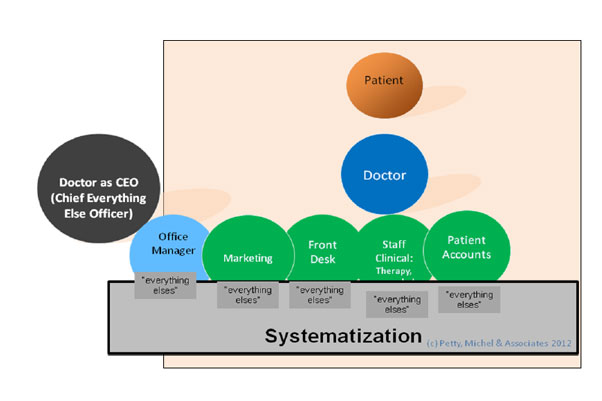
Avoiding Hidden Expenses in Scaling Your Practice
Do you want to improve your income and the quality and quantity of your services?
One strategy is to add a therapy machine — or another one — to your practice. You could also bring on another provider. This could add more services per visit and more visits per week, improving your income and the outcomes you get with patients.
Makes sense, right?
In theory, yes. In real life, not so much.
Properly implemented, more services from machines or providers can improve the quality and quantity of outcomes and improve the bottom line. However, the implementation must be done correctly. And often, it is not.
I have seen chiropractic clinics with the largest room in the office filled with therapy equipment that was rarely used. I have had heated discussions with doctors who would buy more equipment when they were not using what they had just purchased. And if the equipment is used, often there is insufficient staff or resources elsewhere: no one running the front desk department, marketing is sporadic, and patient treatment and financial plans are rarely or poorly done.
This gets even worse when hiring associate doctors. You have heard the stories, so I won’t elaborate. Group practices can work well, and we recommend them. In fact, I don’t know of one chiropractic management company with more combined experience working with associates than we have. Multiple-doctor clinics are one of our specialties. But they have to be done correctly, and they rarely are.
Let’s look at three principles to help you implement additional services correctly.
1. FOCUS AND IMPROVE YOUR CORE SERVICES
More therapy and more providers will not take the place of quality and well-organized services.
By expanding your services, you can dilute your unique selling proposition!
Starbucks did this back in 2006. They kept introducing new products, which devalued their primary brand. The baristas had difficulty keeping up with all the new products. They had to become fast-moving technicians rather than friendly conversationalists with the customers. Their statistics decreased until they simplified their services and focused on their core values and services. *
Before you add machines and providers, focus on your core services and improve those, which will also enhance your bottom line.
2. SIMPLICITY
More services can add more complexity. Richard Koch is one of the researchers I quoted in my book, Goal Driven Business. He says: “Because business is wasteful, and because complexity and waste feed on each other, a simple business will always be better than a complex business.”
A therapy unit, for example, even if it is “unattended,” requires supervision by the staff and you. And who will do it if it requires someone to apply the therapy? You can see the extra expense once you work out the details and the math.
Complexity can hide overhead. So, when adding more services, beware of adding complexity and keep the services as simple as possible.
3. LARGE BUT SIMPLE CHIROPRACTIC HEALTHCARE BUSINESS
A larger business provides more services and can generate more income. While Richard Koch recommends simplicity, he also supports growth:
“Because scale is normally valuable, for any given level of complexity, it is better to have a larger business. The large and simple business is the best.”*
Add more services to your practice, but keep these three points in mind:
- Improve what you have. First, focus on and improve your skills and those of your team. Invest in your team and yourself. This will enhance your bottom line and your services. Your goals are expertise and mastery.
- Keep it simple. Always work towards simplifying your procedures and your patient’s experience.
- Scale. Add services and scale your business. But first, plan it out ahead of time, examine the extra time, effort, and costs involved, and manage it well. (You can have us help!)
Keep expanding — but keep improving first. And keep it simple.
Ed
References
*https://hbswk.hbs.edu/item/starbucks-lessons-for-premium-brands
* The 80/20 Principle (Richard Koch)
—————————————————-
If your practice building efforts aren’t taking you to your goals, there are reasons — many of which are hidden from you.
Find out what they are and how to sail to your next level by getting and implementing my new book, The Goal Driven Business.

The Goal Driven Business, By Edward Petty


























